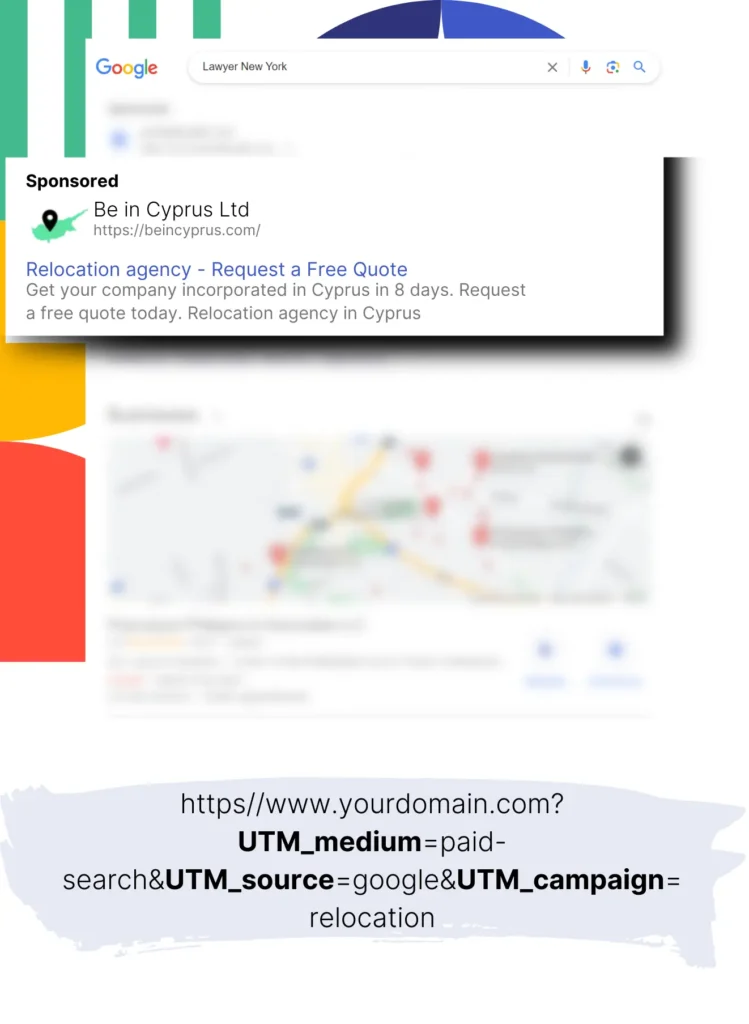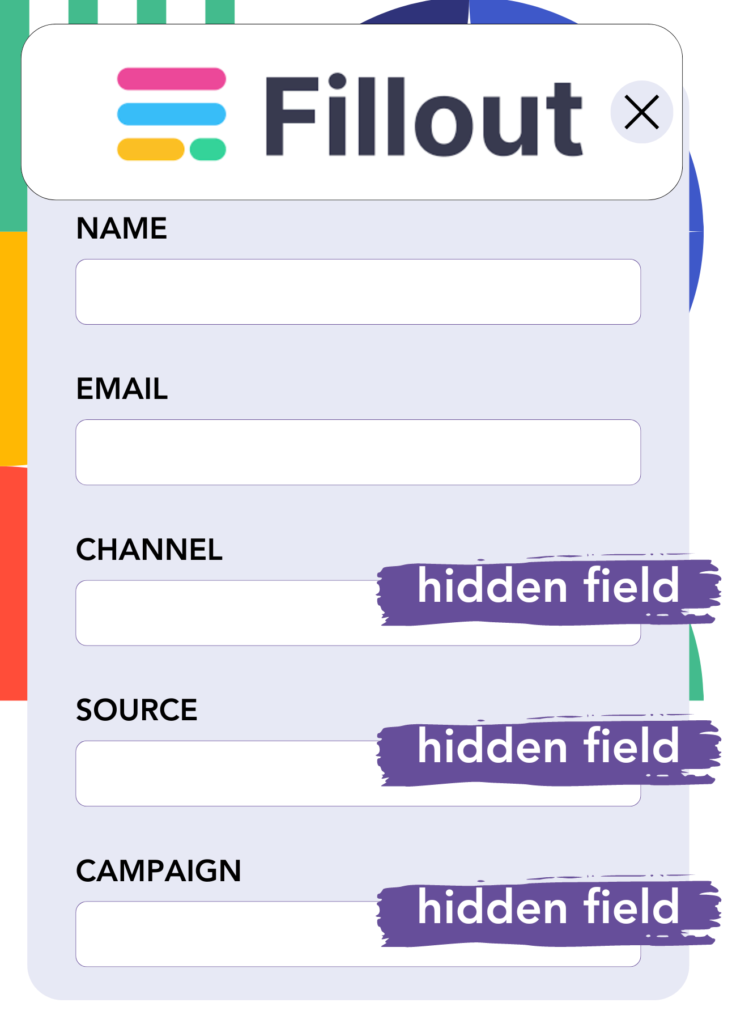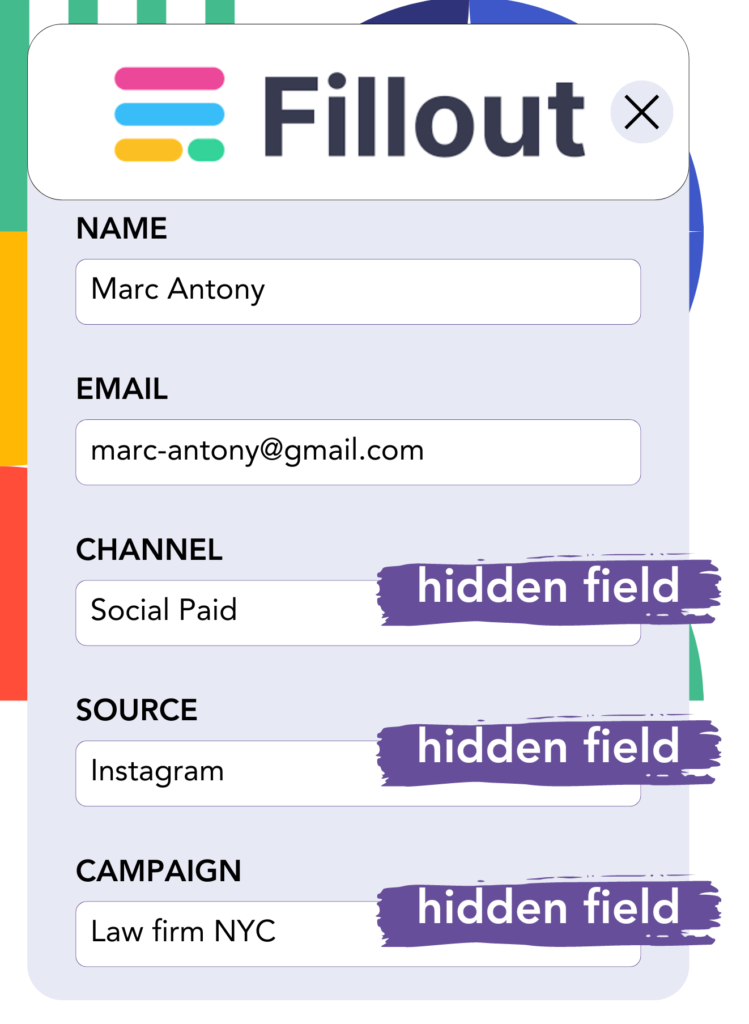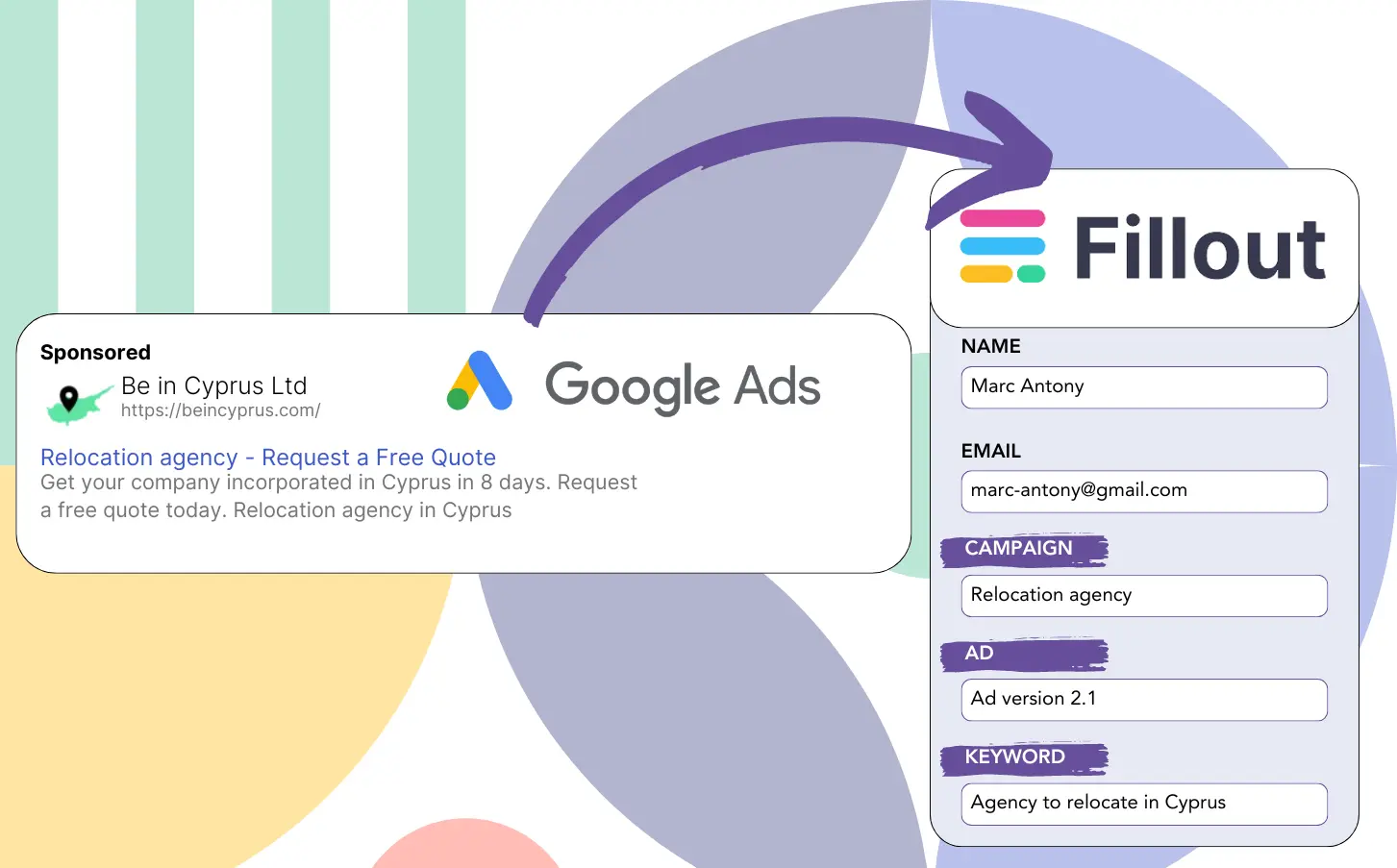Are you looking to track which Google Ads campaigns are responsible for your leads?
This problem is widely recognized; Google Ads reports lead totals by campaign, ad, or keyword but lacks detailed lead-level information.
As a result, it’s impossible to identify which campaign, ad, or keyword produced the leads that became customers.
Leadsources resolves this challenge.
With Leadsources, you can monitor Google Ads details (campaign, ad, keyword, etc.) for each lead.
Fillout allows you to save Google Ads information (campaign, ad, keyword, etc.) for every individual lead.
You can create reports such as “Top keywords for lead generation” to inform decisions on which keywords to enhance or remove.
Let’s begin!
Capture Google Ads lead data in Fillout in 4 steps
Step 1: Add Leadsources in the head tag of your website

Sign up to Leadsources.io, and benefit from our 14-day free trial.
Insert the Leadsources code into your website’s head tag. Coding experience is not necessary.
Simply follow this easy step-by-step guide.
Step 2: Add the UTM parameters to your Google Ads campaigns

Include the UTM parameters you want to monitor in each of your Google Ads campaigns.
Examples of UTM parameters you might add to your ad are:
- UTM_source
- UTM_campaign
- UTM_term
- UTM_content
In addition to UTM parameters, Leadsources collects data like channel, landing page, and landing page subfolder, giving you a complete lead-level overview.
Step 3: Add the hidden fields in Fillout

Leadsources auto-fills hidden fields with Google Ads data (campaign, ad, keyword, landing page, etc.) when visitors submit your Fillout (name, email, etc.).
Use the provided step-by-step guide to insert hidden fields into Fillout.
Leadsources will automatically record the Google Ads data in your Fillout.
Step 4: Capture the Google Ads data in Fillout

Leadsources records the Google Ads data (campaign, ad, keyword, landing page, etc.) when a visitor clicks on your ad and reaches your page.
The hidden fields in your Fillout are automatically filled with Google Ads data by Leadsources.
When the form is submitted, both the Google Ads data and form responses are sent to the Fillout submissions page.
How does Leadsources work?
By placing the Leadsources code in the head tag of your website, it will capture Google Ads data (UTM parameters and referrer) each time a visitor comes to your site.
The Google Ads data is then stored in the hidden fields of your Fillout.
Even if a visitor comes to your site without UTM parameters, Leadsources will collect information using the referrer:
- Channel
- Source
- Campaign
- Landing page
- Landing page subfolder
With this approach, you can monitor important lead source details even if UTM parameters are missing, such as:
- On Google Search
- On your Instagram bio link
- On your social media posts
- Etc.
Many tools track lead data only if UTM parameters are included (primarily for paid and referral sources) – this can be an issue!
Leadsources, on the other hand, tracks lead data across all channels, regardless of UTM parameters:
- Organic Search
- Paid Search
- Organic Social
- Paid Social
- Referral
- Affiliate
- Display Advertising
- Direct Traffic
This lets you track and combine all lead source information into a single location.
Pro tip:
Track Google Ads data in all the popular online form builders, including Cognito Forms, Gravity Forms, Jotform, Typeform, WPForms, and more. Learn how to add Google Ads UTM parameters in any form builder.
How to run performance reports
Now that Google Ads data is stored in Fillout, you can create performance reports such as:
- Leads per campaign
- Leads per ad
- Leads per keyword
- Etc.
This enables you to make better decisions regarding your Google Ads budget.
Let’s review the various reports you are able to create.
Lead performance reports
You can create reports indicating the volume of leads generated from:
- Channel
- Campaign
- Ad
- Keyword
- Landing page
- Landing page subfolder
Example #1
You can export data from campaigns on different channels (SEO, PPC, email, etc.) and generate a report named “Leads by Channel.”

Example #2
Once you know which channel produces the most leads (e.g., Google Ads), you can focus on that channel to view lead counts for each individual ad campaign.

Example #3
Once you find the campaign generating the most leads, you can dive deeper by examining which keywords are producing those leads.

Sales performance report
Finding out which ads and keywords bring in the most leads is important, but do they also contribute to higher revenue?
Sending your Fillout data to a CRM allows you to generate complete sales reports.
Example:
| Channels | Search Paid | Social Paid |
| Leads | 50 | 75 |
| Sales | 5 | 6 |
| Average order value | $150 | $100 |
| Revenue | $750 | $600 |
Following your campaigns on Google and Facebook, you found that Social Paid ads generated more leads than Search Paid ads.
Analyzing lead conversions over several weeks revealed that Search Paid produced more revenue with fewer leads than Social Paid. This indicates a good reason to increase the budget for Search Paid campaigns.
LeadSources tracks the source of each lead in Fillout, whether they come from ads, organic search, social, email, etc. and syncs that data with each submission. See the full breakdown on the lead source in Fillout page.

